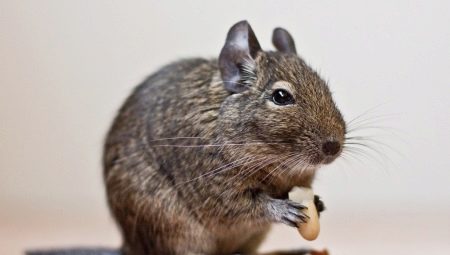Chilean squirrel degu is liked by adults and children for a smart, cheerful disposition. This animal belongs to rodents, caring for them is similar to caring for such animals, but their owners need to observe some nuances of content. What is their specificity, nature and how much degu live - can be found in the article.
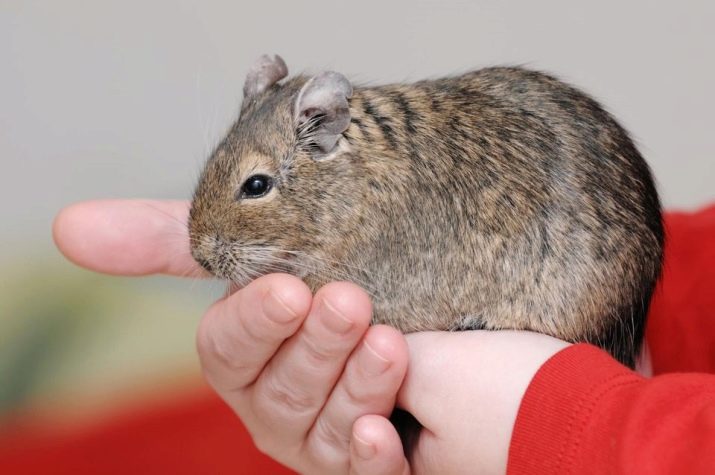
Description
Tiny exotic Chilean degu squirrel similar in appearance more like a rat, mouse, chinchilla, belongs to the species of South and Latin American rodents from the family of eight-teeth. In the scientific world, it is called Octodon Degus (shrub rat), or Degus, the natural habitat of which is the piedmont area with shrubs in South American countries - Bolivia, Argentina, Chile, Peru.
Chilean proteins have a body length of 10-24 cm (depending on gender), their long tail is 7-15 cm, weight ranges from 100 to 400 grams. In captivity, the weight of degus does not usually exceed 200–250 grams. On the elongated face of the animal there are dark bead eyes, a slightly flattened nose, a thick mustache, vibrissa, large rounded ears stick out above the head. The hair of these rodents is soft, soft to the touch, and at the end of the tail there is a small brush of long hairs. The front legs of the degus, with which it captures food, are shorter and weaker than the hind legs.
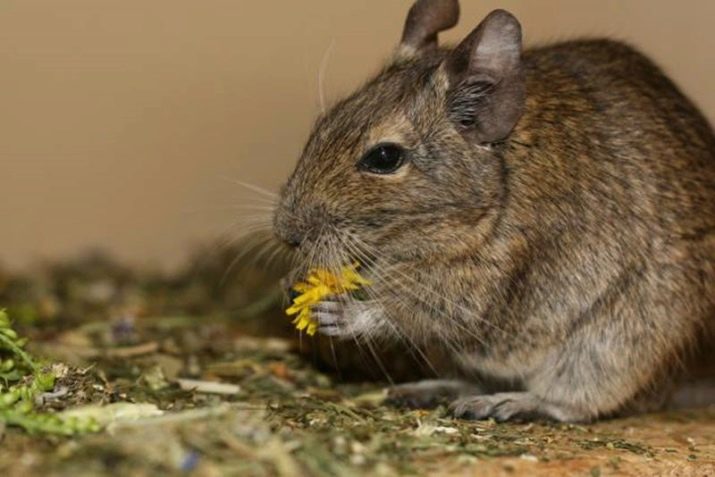
The color of the animal in nature is gray-brown or tan, on the back it is usually darker, and on the abdomen the coat is light gray or cream. Now, in artificial conditions, spotted, blue and sand degus are removed. During a danger (in nature, this is an attack of birds of prey) or a stressful situation, squirrels throw off skin with hair from the tail, leaving it to the enemy, then the animal bites off a naked, dead section of the tail to itself. She will not grow a new tail, so, having met a short-tailed shrub rat, we can assume that she survived stress.
Degu sleeps at night, leading an active life during the day. In nature, she eats at the beginning or at the end of the day, at this time the sun in her homeland is not so active and the animal will not receive heat stroke. At home, the protein can adapt to the owners' regime.
In nutrition, degus are unpretentious, prefer fresh grass or hay, roots and leaves of plants, a little grain, seeds or fruits.
Like many rodents, Chilean squirrel stocks for the winter season in its hole. The teeth of this rodent grow throughout life. Only 20 teeth, their little animal periodically grinds on various planks or branches.
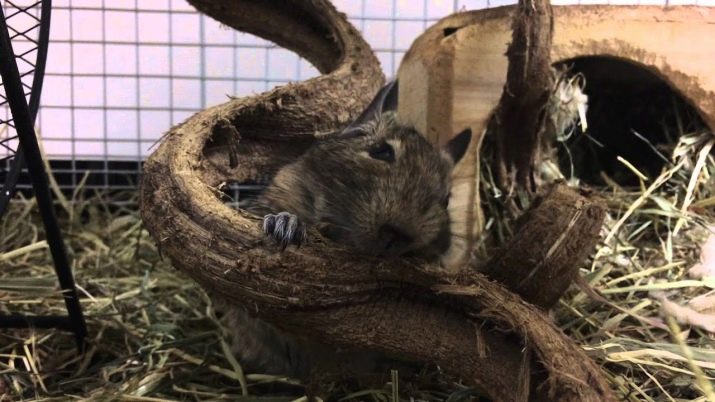
Character
Studded in natural conditions in packs, degus are sociable in nature. On the foothill territory of the Andes, under the ground, they dug entire communicating tunnels. Nimble and fast (they are reminiscent of squirrels in this) in their society degu build a strict hierarchy, do not like strangers and protect the territory belonging to the group from them. Degu bred at home can be described as very nimble, moving animals with a curious and sociable character.
They are smart, smart, recognize their name and even give in to training. But each individual Chilean squirrel has an individual character, which is laid from the childhood of the animal. This is especially true of degus grown in captivity. How the animal will behave, what to prefer in nutrition, will depend on how he was treated, in what conditions he grew up.
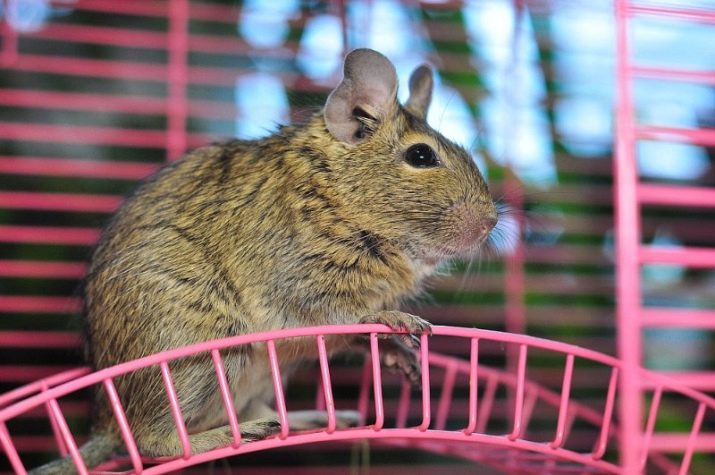
Regarding the sensory organs, it is important to note that degu's vision is poor, albeit with a good 360 ° view. But the rumor is very sharp: in a quiet and calm environment, the ears of the rodent are relaxed and almost lie on their heads, but they immediately straighten up if they hear a slight rustling or noise. Degou can communicate through sounds, express their positive attitude or discontent.
Like cats degu make cooing, purring sounds when the owner strokes them behind the ear, and if they are unhappy, you can hear "grunt".
The only degu in the house will require attention and affection from the owner, who will become a real friend. A couple of Chilean squirrels will not be so bored, they will communicate with each other, delighting the eyes of others with their funny behavior and games. Shrub rats are very shy and react nervously to a sharp noise or movement, they need to be tamed to their hands for a long time and carefully. This must be taken into account in their maintenance, as well as to warn about their characteristics of children and guests who come to the house.
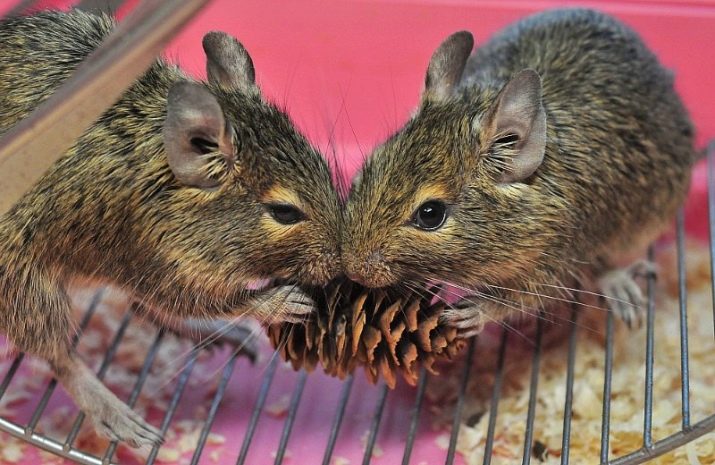
Life span
The life of Chilean squirrels in natural conditions, where you need to get food yourself and protect yourself from enemies, is usually shorter than life spent in captivity. In the wild, degu live only 5-6 years, becoming, as a rule, prey of birds of prey and foxes.
They are almost not affected by diseases, have strong immunity.. Tamed man squirrel can please its owner for 8–11 years (an average of 9.5 years), and even degu record champions who have survived to the age of 15 are known. At the same time, degus having an unusual, artificially derived color, live significantly less than relatives of a natural color. Life of blue or sand species is only 3-4 years.
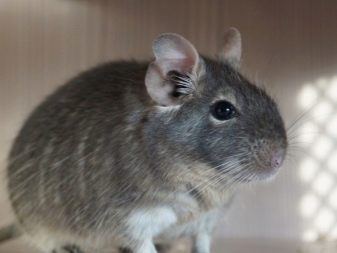

The longevity of these animals is achieved by great care and love of the owners, and also depends on the following factors:
- creating a favorable microclimate;
- proper feed;
- cell size;
- elimination of stress for the animal;
- organization of leisure, communication;
- timely contact to the veterinarian.

Content Features
Home
Before the appearance of the Chilean squirrel in the house, it is necessary to take care of a comfortable and durable home for her. It can be a metal cage or a glass aquarium of a minimum size of 75x60 cm with a height of 50–70 cm. The floor should be covered with sand, paper or rags. To absorb waste, it is important not to use coarse cat-like filler, granules, hay. Fillers can injure the legs of degus, and they eat hay, sand, absorbing diaper, will be suitable for the toilet.
Inside the cage there should be several important accessories for the animal. These are various cross over bridges made of wood, which degu bites over time, with a rotating wheel with a diameter of at least 35 cm. You also need to install a “mink” - this can be a wooden house or an unnecessary ceramic flower pot. To grind your teeth, a few ordinary tree branches thrown into the home are suitable.
If the cage allows, you can install a tunnel made of durable plastic.
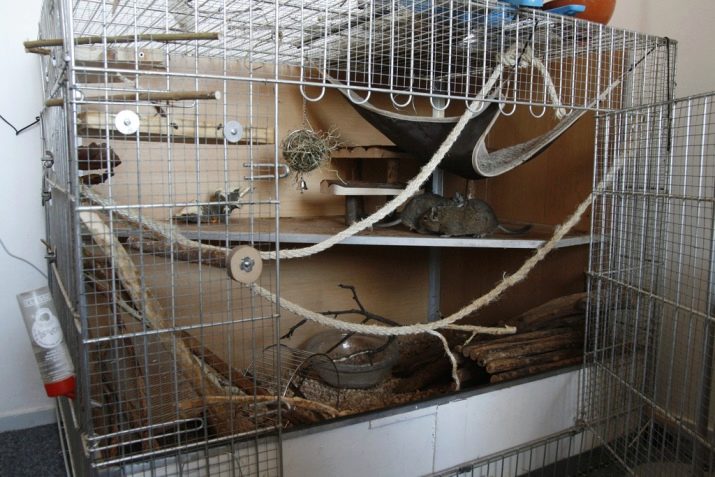
It is better to choose a drinker with clean water and a feeder automatically to avoid scattered food and spilled water.
Degas love to take “sand baths”, it is better to put a sand pool for these procedures temporarily for the sake of cleanliness around. They place the house degu away from drafts and heating appliances, trying to avoid direct sunlight. Animals do not like noise, so the places near the TV and radio are not suitable. The kitchen is not the best room for a Chilean squirrel that does not tolerate strong odors and high temperatures. Mandatory house cleaning degu - duty weekly and general once every 1-2 months.
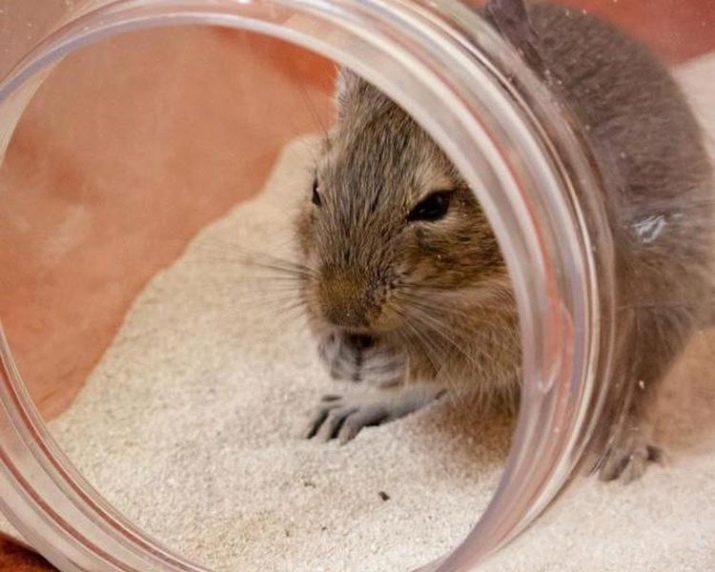
Food
The degu diet consists of roots, cereal grains, seeds, grass, leaves. Chinchillas feed is the most adapted in pet stores for them. It is a mixture of cereals, flakes, dried herbs, roots, dried berries. Occasionally, you can feed your pet with fresh unsweetened vegetables, rosehip berries, mountain ash, but in no case sweets. Sugar is contraindicated in degus; they are susceptible to diabetes. The daily norm of food for degu is usually divided by 3-5 times during the day.
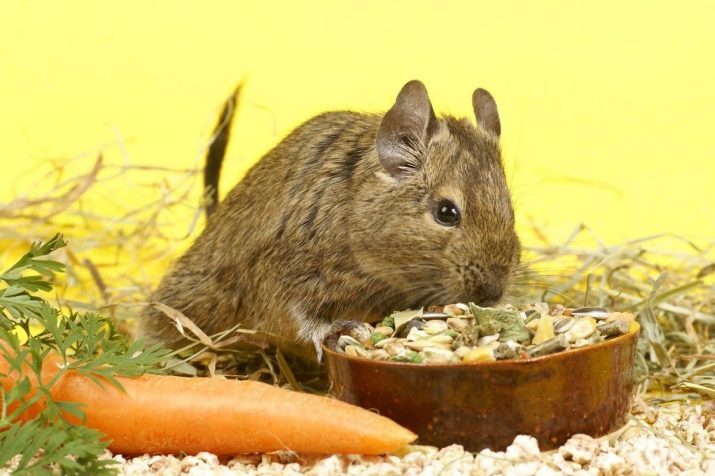
Care
Taking care of a rodent pet and taking care of it is an important part of the content of Chilean squirrels. Constant contact with the owners will cause the trust of the animal, it will feel more comfortable. You need to communicate with him calmly, in a quiet voice, avoiding sudden movements. You can not grab a degu with your hands from the back or from the side, from fear it can show a protective reaction and throw the skin off the tail. Show the open palm first, holding it all the time in front of the squirrel's eyes.
In addition to games and fun, you definitely need to monitor the external condition of the fur and skin of degu. The coat should be smooth, without lumps, skin without corns, redness. The mucous eye should be clean, without conjunctivitis crumbs. The behavior of a healthy degu should be cheerful, it will be mobile, often jump.
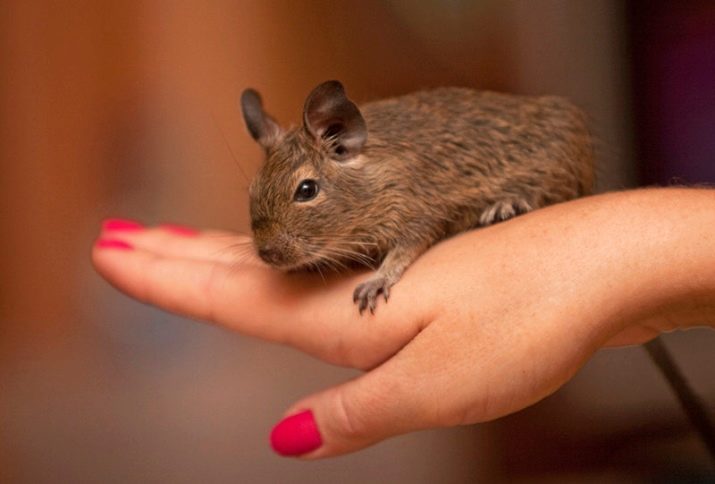
The lethargy and drowsiness of degu is a signal of the poor health of the Chilean squirrel, then you need to consult a specialist veterinarian.
Disease
Degus is not susceptible to chronic diseases, but problems (often due to sugar intolerance and consumption of starchy foods) can occur, such as:
- Dental
- diabetes;
- baldness;
- cataract;
- obesity;
- digestive disorders.
Often degu catch a cold, therefore hypothermia, water procedures, drafts are contraindicated for them. They are treated for colds by drinking plenty of fluids, providing rest and washing the mucous membranes. In other cases, timely contact with a veterinarian, compliance with hygiene and nutrition rules with the complete exclusion or limitation of sucrose, fructose, and nuts will help.
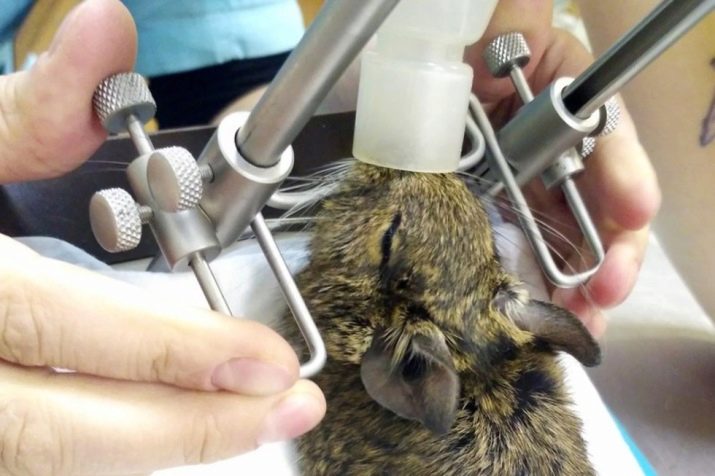
See below for more details.
